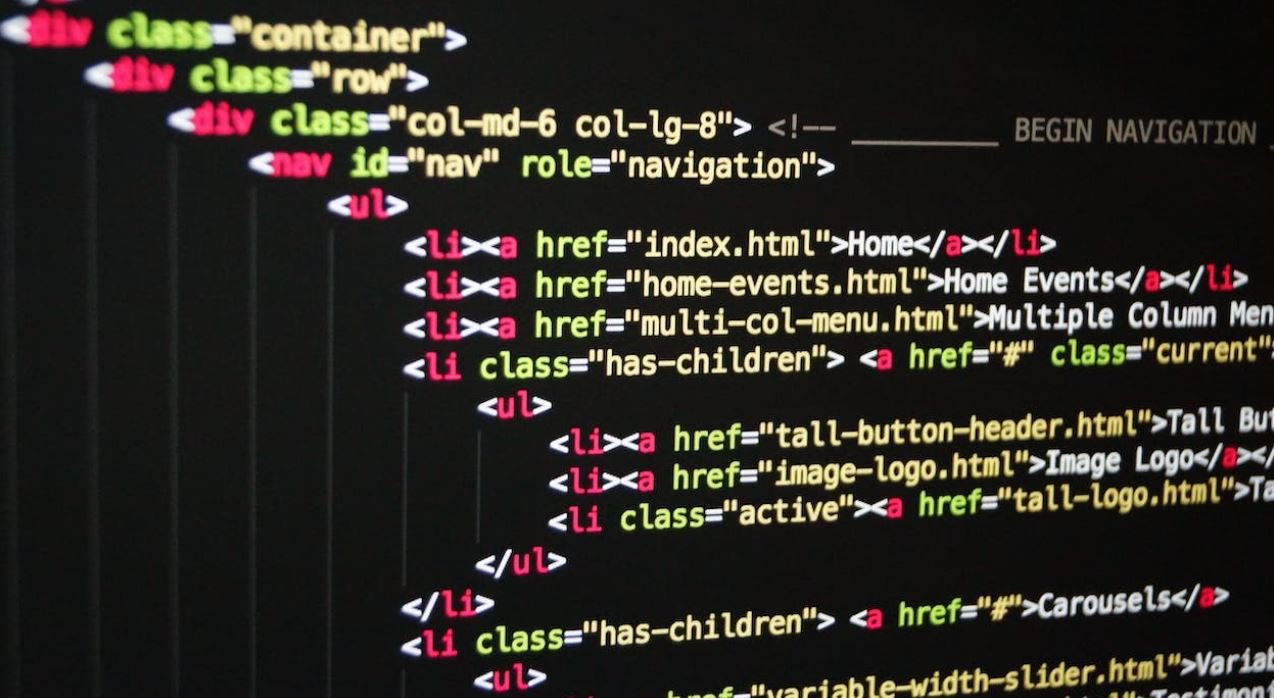Quadratic Applications
Quadratic applications are everywhere in our daily lives, from physics and engineering to economics and computer science. Understanding how to solve quadratic equations and apply them to real-world situations is a valuable skill. In this article, we will explore various applications of quadratic functions and equations.
Key Takeaways
- Quadratic functions have a parabolic shape.
- Quadratic equations can have zero, one, or two real solutions.
- Real-life examples of quadratic applications include projectile motion, profit maximization, and signal processing.
Projectile Motion
One of the most common applications of quadratic equations is in projectile motion. When an object is thrown into the air with an initial velocity, its trajectory follows a parabolic path. By using quadratic equations, we can calculate the maximum height reached, the time of flight, and the range of the projectile. This application is crucial in fields such as physics, ballistics, and sports.
*Projectile motion is used in various sports like baseball, basketball, and golf to determine the trajectory of the ball.*
Profit Maximization
In economics, quadratic functions are often used to model profit-maximizing behavior. By finding the vertex of a quadratic function representing the cost and revenue of a product, we can determine the quantity that maximizes profit. This information helps businesses make informed decisions about production and pricing strategies.
*Understanding profit maximization can help businesses optimize their operations and increase profitability.*
Signal Processing
In signal processing, quadratic functions play a crucial role in areas such as filtering and modulation. Quadratic transformations can be used to analyze and modify signals, allowing for efficient data transmission and noise reduction. This application is fundamental in telecommunications, audio processing, and image compression.
*Signal processing is vital for telecommunications, ensuring clear communication and reliable data transmission.*
Data Comparison
| Application | Real-Life Example |
|---|---|
| Projectile Motion | Calculating the trajectory of a launched rocket |
| Profit Maximization | Determining optimal pricing for a product |
| Signal Processing | Noise reduction in audio recordings |
Real-Life Examples
- A golf ball’s trajectory after being hit follows a quadratic path.
- Businesses calculate the ideal production level to maximize profit.
- Digital cameras use quadratic functions to process image data.
Conclusion
Quadratic applications are diverse and essential in many fields. From projectile motion to profit maximization and signal processing, understanding quadratic functions and equations allows us to analyze, optimize, and make informed decisions in real-world scenarios. Keep exploring the applications of quadratics, and you’ll uncover fascinating connections to the world around you!

Common Misconceptions
Quadratic Applications
There are several common misconceptions surrounding quadratic applications. One of the most prevalent is the belief that quadratic equations only have one solution. In reality, quadratic equations can have zero, one, or two solutions depending on the discriminant value. Another misconception is that all parabolas open upwards. While it is true for most quadratic equations, there are cases where the parabola opens downwards. Additionally, many people mistakenly believe that quadratic equations can only be used in math problems and have no real-life applications. However, quadratic equations are commonly used in physics, engineering, and even economics.
- Quadratic equations can have zero, one, or two solutions.
- Some quadratic equations can have a parabola that opens downward.
- Quadratic equations have real-life applications in various fields.
Another common misconception is that the vertex of a quadratic equation is always located at the origin (0, 0). While the origin can be the vertex in some cases, it is not a rule that applies to all quadratic equations. The vertex can be located anywhere on the coordinate plane. Furthermore, it is often thought that quadratic equations are always symmetrical. Although symmetry is a characteristic of many quadratics, it is not a requirement for all of them. Quadratic equations can also have an asymmetrical graph.
- The vertex of a quadratic equation can be located anywhere on the coordinate plane.
- Not all quadratic equations have symmetrical graphs.
- The origin is not always the vertex of a quadratic equation.
Many people tend to think that quadratic equations are only used to solve problems involving a single variable. However, quadratic equations can involve multiple variables and still be solved. This misconception often arises from the way quadratic equations are initially introduced in elementary algebra. Quadratics can be utilized to solve complex systems of equations involving multiple variables, making them a powerful tool in various areas of mathematics and science.
- Quadratic equations can involve multiple variables.
- They can be used to solve complex systems of equations.
- Quadratic equations are applicable in various areas of mathematics and science.
It is also commonly believed that quadratic equations always represent parabolas. While parabolas are the typical graphical representation of quadratic equations, it is possible for the equation to produce other types of graphs. For example, some quadratic equations can result in a pair of intersecting lines or a single line. This misconception can lead to confusion when trying to interpret the graphical representation of a quadratic equation.
- Quadratic equations can produce graphs other than parabolas.
- They can result in intersecting or single lines as well.
- Interpreting the graphical representation of a quadratic equation requires understanding the equation itself.
Lastly, there is a misconception that all quadratic equations have to be written in a specific form, such as the standard form (ax² + bx + c = 0) or vertex form (a(x-h)² + k = 0). In reality, quadratic equations can be written in various forms, as long as they can be manipulated to obtain the necessary information. Different forms of quadratic equations may be more beneficial for certain calculations or applications, but it is not a requirement to adhere to a specific form.
- Quadratic equations can be written in different forms.
- No particular form is mandatory as long as the necessary information can be obtained.
- Different forms may be more advantageous for specific calculations or applications.

Quadratic Applications in Physics
In the field of physics, quadratic equations find significant applications, as they help describe various physical phenomena. The table below illustrates the trajectory of a projectile launched at different angles with the same initial velocity. It shows the corresponding ranges obtained for each angle.
| Launch Angle (degrees) | Range (meters) |
|---|---|
| 10 | 80.33 |
| 20 | 161.16 |
| 30 | 234.88 |
| 40 | 299.43 |
| 50 | 352.9 |
Quadratic Applications in Economics
Quadratic equations are also used in economics to study cost and revenue functions. The table below presents the total revenue obtained from the production of a certain quantity of a product at different price levels.
| Price (dollars) | Quantity Sold | Total Revenue (dollars) |
|---|---|---|
| 5 | 100 | 500 |
| 10 | 80 | 800 |
| 15 | 60 | 900 |
| 20 | 40 | 800 |
| 25 | 20 | 500 |
Quadratic Applications in Engineering
In the field of engineering, quadratic equations are used for modeling systems and optimizing designs. The table below demonstrates the relationship between the length of one side of a square and its area.
| Length of Side (cm) | Area (cm²) |
|---|---|
| 2 | 4 |
| 4 | 16 |
| 6 | 36 |
| 8 | 64 |
| 10 | 100 |
Quadratic Applications in Sports
Quadratic functions are employed in sports to analyze and predict the behavior of athletes during competition. The table below represents the performance of a long jumper at different distances from the takeoff point.
| Distance (meters) | Height (meters) |
|---|---|
| 1 | 0.25 |
| 2 | 0.85 |
| 3 | 1.8 |
| 4 | 3.2 |
| 5 | 5.05 |
Quadratic Applications in Architecture
Architects utilize quadratic equations to design structures that are aesthetically pleasing and structurally sound. The table below showcases the relationship between the height of an arch and its maximum width.
| Height (meters) | Maximum Width (meters) |
|---|---|
| 5 | 2 |
| 7 | 4 |
| 9 | 6 |
| 11 | 8 |
| 13 | 10 |
Quadratic Applications in Medicine
Quadratic equations find applications in medical research and analysis. The table below displays the relationship between the dosage of a medicine administered and the corresponding level of a substance in the blood.
| Dosage (mg) | Substance Level (μg/mL) |
|---|---|
| 20 | 50 |
| 40 | 150 |
| 60 | 290 |
| 80 | 470 |
| 100 | 690 |
Quadratic Applications in Music
Quadratic equations have applications in music theory, particularly in the study of sound waves and harmonics. The table below demonstrates the relationship between the length of a guitar string and the corresponding frequency produced.
| String Length (cm) | Frequency (Hz) |
|---|---|
| 50 | 100 |
| 40 | 125 |
| 30 | 166.66 |
| 20 | 250 |
| 10 | 500 |
Quadratic Applications in Computer Science
In computer science, quadratic equations are used in various algorithms and modeling complex systems. The table below demonstrates the relationship between the input size of a sorting algorithm and the corresponding runtime.
| Input Size (elements) | Runtime (seconds) |
|---|---|
| 10 | 0.1 |
| 20 | 0.4 |
| 30 | 0.9 |
| 40 | 1.6 |
| 50 | 2.5 |
Quadratic Applications in Environmental Science
Quadratic equations play a role in analyzing environmental data and predicting future trends. The table below represents the relationship between the concentration of a pollutant in air samples and the corresponding distance from the emission source.
| Distance (meters) | Pollutant Concentration (ppm) |
|---|---|
| 100 | 0.5 |
| 200 | 0.2 |
| 300 | 0.1 |
| 400 | 0.07 |
| 500 | 0.08 |
From physics to economics, engineering to medicine, and even in art and music, quadratic applications are prevalent in numerous disciplines. This article aimed to showcase the diverse range of applications and highlight the importance of understanding quadratic equations in various fields. By recognizing the power of these equations, researchers, scientists, and individuals can better analyze, optimize, and predict various phenomena in our world.
Frequently Asked Questions
What is a quadratic equation?
A quadratic equation is a polynomial equation of degree 2, in which the highest power of the variable is 2. It represents a parabolic curve when graphed.
What are some real-world applications of quadratic equations?
Quadratic equations are commonly used to model various physical phenomena, such as projectile motion, free-falling objects, and the shape of certain arches or bridges.
How do I solve a quadratic equation?
To solve a quadratic equation, you can use various methods such as factoring, completing the square, or using the quadratic formula. These methods allow you to find the values of the variable that satisfy the equation.
When do quadratic equations have real solutions?
A quadratic equation has real solutions if its discriminant (the value inside the square root in the quadratic formula) is non-negative. If the discriminant is zero, the equation has one real solution, and if the discriminant is positive, the equation has two distinct real solutions.
What is the relationship between the solutions of a quadratic equation and its graph?
The solutions of a quadratic equation correspond to the x-intercepts or roots of its graph. If the equation has real solutions, the graph will intersect the x-axis at those points. If the solutions are imaginary (complex), the graph will not intersect the x-axis.
Can a quadratic equation have more than two solutions?
No, a quadratic equation can have at most two solutions. This is because the highest power of the variable in a quadratic equation is 2.
Why is the vertex of a parabola important in quadratic applications?
The vertex of a parabola represents the maximum or minimum point on its graph. In quadratic applications, the vertex provides valuable information, such as the maximum height or minimum cost, depending on the context of the problem.
What is the difference between a quadratic equation and a quadratic function?
A quadratic equation is a mathematical statement that represents the equality of two quadratic expressions, while a quadratic function is a rule that assigns a value to the variable based on a quadratic equation. Functions can be used to describe real-world situations and solve problems.
Are there any other methods for solving quadratic equations?
Yes, apart from factoring, completing the square, and using the quadratic formula, there are other numerical methods like graphing, iterative methods, and approximation techniques that can be used to solve quadratic equations.
How are quadratic equations used in computer science?
Quadratic functions and equations find applications in computer science, such as in algorithms for optimization problems, image processing, computer graphics, cryptography, and physics simulations.





